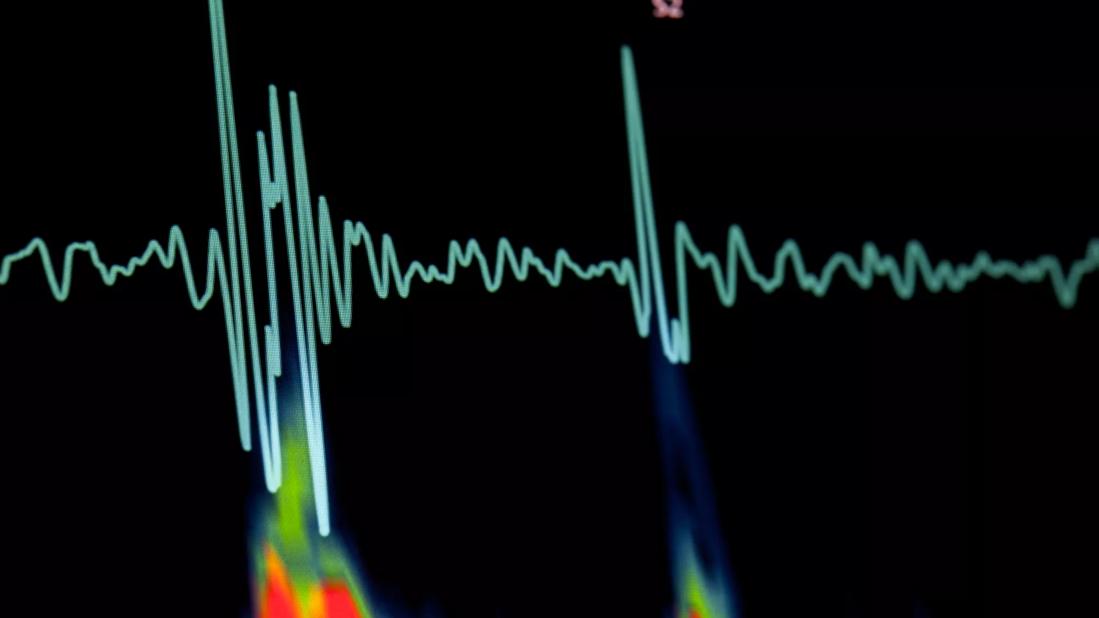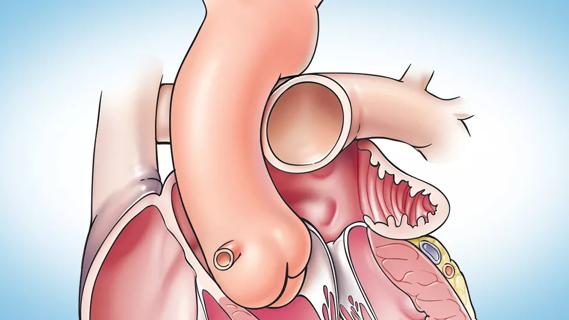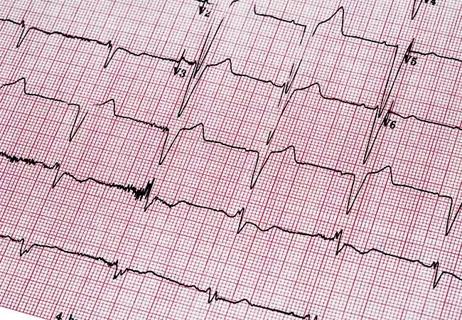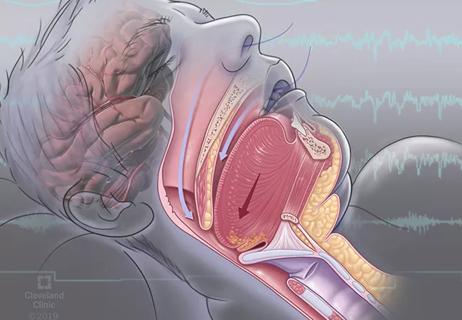UK experts compare and contrast the latest recommendations

By Sandra Howell, MBBS, MEd, MSc, MPhil; Alphonsus Liew, MBBS; and Christopher Aldo Rinaldi, MBBS, MSc, MD
Advertisement
Cleveland Clinic is a non-profit academic medical center. Advertising on our site helps support our mission. We do not endorse non-Cleveland Clinic products or services. Policy
Note: This article is reprinted, with slight adaptation, from the Cleveland Clinic Journal of Medicine (2025;92[5]:297-300).
With a prevalence of 37.57 million known cases globally, atrial fibrillation is one of the most common cardiac arrhythmias.1 Atrial fibrillation diminishes quality of life, is associated with poor long-term prognosis and has a considerable socioeconomic impact on health systems worldwide.2
Two recent sets of guidelines for the management of atrial fibrillation have been welcomed by cardiac societies:
Recommendations in both documents stress the importance of a holistic patient-centered approach to atrial fibrillation and acknowledge that the increasing incidence of atrial fibrillation is linked to preventable risk factors in an aging population, such as heart failure, diabetes, hypertension, high alcohol consumption, physical inactivity, smoking and obesity. The American guideline3 recognizes the significance of preemptive treatment of risk factors in patients at risk of atrial fibrillation and highlights the need for integrative primary prevention as first-line therapy, as reflected by the introduction of atrial fibrillation stages such as “at risk of atrial fibrillation” and “pre–atrial fibrillation.”
Advertisement
In a recent issue of the Cleveland Clinic Journal of Medicine, Campbell and colleagues5 provide a timely, expert review of the new American guideline for the diagnosis and management of atrial fibrillation.3 They emphasize the new staging system and the integration of individuals at risk of atrial fibrillation, and they acknowledge that atrial fibrillation is a “disease continuum.” They also call attention to the need to incorporate recommendations for lifestyle and risk-factor modification — including targeting obesity, encouraging reduced alcohol consumption, smoking cessation, and strict management of diabetes and hypertension — into clinical practice to reduce the risk of new-onset atrial fibrillation and the complications of clinically manifested atrial fibrillation. Further, Campbell and colleagues point out that the need for anticoagulation should be determined annually based on risk assessment of thromboembolic events.
It is laudable that the European guidelines4 recommend early intervention and aggressive treatment of cardiovascular risk factors to reduce progression and recurrence of atrial fibrillation and thereby prevent hospital admissions and exacerbations of symptoms. However, they stop short of strongly recommending preventive measures, despite results of trials such as RACE 36 that showed early targeted therapy for underlying conditions helped maintain sinus rhythm in patients with persistent atrial fibrillation. This is particularly relevant for individuals with obesity, who, in a meta-analysis that included data from 587,372 patients in 16 studies, were found to have a 51% increased risk of new-onset atrial fibrillation, with no sex difference.7 Progressive weight loss had a beneficial effect on long-term freedom from atrial fibrillation and arrhythmia-free survival in the LEGACY trial,8 although this was achieved only if weight loss was 10% or more and maintained over time. In another study of patients with long-standing persistent atrial fibrillation undergoing ablation, weight loss had no impact on arrhythmia burden and long-term ablation outcome,9 suggesting a possible point of no return. Further, atrial fibrillation incidence was noted to be risk-factor–specific in several studies, with an increased risk of 50% for individuals with hypertension,10 20% for those with prediabetes, 28% for those with diabetes11,12 and 38% for heavy drinkers (≥ 21 alcoholic drinks per week).13
Advertisement
A study that used drug-target Mendelian randomization analyses suggested that lowering systolic blood pressure by 10 mm Hg with antihypertensive drugs had a preventive effect on atrial fibrillation development (odds ratio of 0.64).14 A recent meta-analysis found that treatment of diabetes with sodium-glucose cotransporter 2 inhibitors, glucagon-like peptide 1 receptor agonists and dipeptidyl peptidase-4 inhibitors reduced the risk of new-onset atrial fibrillation by 23%, 28% and 34%, respectively, compared with insulin.15 Absolute abstinence from alcohol, but not reduced alcohol consumption, in chronically heavy drinkers showed the greatest effect, reducing incident atrial fibrillation by 63%.16 Preventive measures need to address all risk factors individually to achieve cumulative success.
Campbell and colleagues5 highlight the changes in recommendation class regarding shared decision-making between patient and clinician to determine the best course of action in atrial fibrillation management and the option of rhythm control as first-line treatment to evaluate the impact of atrial fibrillation on heart function — all with the goal of preventing symptoms; improving quality of life; and reducing mortality, stroke and hospitalization.3
Both the American and European guidelines3,4 recommend using the CHA2DS2-VASc score (1 point given for congestive heart failure, hypertension, age 65 to 74 years, ≥ 75 years [doubled], diabetes mellitus, prior stroke, transient ischemic attack, or thromboembolism [doubled], vascular disease, female sex) for thromboembolic risk assessment and warn against using currently available bleeding scores in isolation to determine eligibility for anticoagulation. However, the European guidelines4 discourage the use of sex to calculate the CHA2DS2-VASc score, seeing it as an age-related modifier and not a risk factor per se. Anticoagulation guidance for device-detected atrial high-rate episodes is appreciably more nuanced in the American guideline,3 with clear cutoffs for duration of atrial high-rate episodes and clear guidance on anticoagulation management.
Advertisement
Treatment of life-threatening bleeds with specific antidotes for direct oral anticoagulants is designated a class 1 recommendation in the American guideline,3 whereas the European guidelines acknowledge the limited availability of these agents in some healthcare environments, giving their use a class 2a recommendation.4
Campbell et al5 note that the American guideline recommends that percutaneous placement of a left atrial appendage occlusion device is reasonable in patients experiencing atrial fibrillation with a moderate to high thromboembolic risk and contraindication to anticoagulation; this was upgraded to a class 2a recommendation owing to updated safety data on devices for left atrial appendage occlusion.3 This remains a 2b recommendation in the European guidelines, which cite the lack of “solid” randomized controlled trial data and need for continued postprocedure antithrombotic treatment.4 Conversely, surgical left atrial appendage closure for all patients with atrial fibrillation undergoing cardiac surgery is recommended as an adjunct to oral anticoagulation to prevent ischemic stroke and thromboembolism,4 while the American guideline3 does not promote this technique for patients with a CHA2DS2-VASc score less than 2.
Catheter ablation with pulmonary vein isolation has a clear class 1 indication as first-line therapy when compared with antiarrhythmic drugs for select patients with paroxysmal and symptomatic atrial fibrillation who are younger and have fewer comorbidities.3 This upgrade in recommendation has been partially adopted by the European guidelines, which do not limit the procedure to a specific ablation method or to select groups and which give it class 2a status. Only when atrial fibrillation is proven to cause symptoms or drive heart failure does catheter ablation receive a class 1b recommendation. Anticoagulation following catheter and surgical ablation is advocated for three months in the American guideline3 and at least two months in the European guidelines.4
Advertisement
Further differences exist regarding pharmacologic treatment of atrial fibrillation. Unlike the European guidelines,4 the American guideline3 does not recommend first-line digoxin for the treatment of acute and long-term atrial fibrillation in patients with preserved left ventricular ejection fraction, owing to its slower treatment response and subsequent longer hospital stays compared with diltiazem.17
Dronedarone is mentioned by both guidelines3,4 for maintenance of sinus rhythm. The European guidelines4 suggest using dronedarone for patients with heart failure with midrange and preserved ejection fraction and ischemic or valvular disease. The American guideline3 warns against its use in patients with risk factors for cardiovascular events and recent history of symptoms or hospitalization due to heart failure, noting the results of ANDROMEDA,18 which showed increased mortality in patients with severely symptomatic or recently decompensated heart failure.
Both American and European guidelines recommend that low-dose amiodarone is reasonable for long-term maintenance of sinus rhythm if other rhythm-control strategies are ineffective or contraindicated.3,4 Further reversal of trigger factors and concomitant treatment of risk factors and comorbidities is encouraged as part of a complementary atrial fibrillation care pathway for patients with first-time atrial fibrillation.
Both cardiac and noncardiac surgery can trigger new-onset, incidental, acute and recurrent atrial fibrillation, but evidence regarding preventive or therapeutic pharmacologic measures appears to be contradictory. The American guideline3 understandably argues that evidence on pretreatment of patients at high risk of atrial fibrillation is not clear due to mixed results in prior trials, with no clinical advantage seen between rate- and rhythm-control strategies in a randomized controlled trial of 2,109 patients looking at the length of hospitalization and rates of new-onset persistent atrial fibrillation after cardiac surgery.19
In comparison, the European guidelines4 introduced pretreatment with amiodarone (class 1) before cardiac surgery if prophylaxis is desired, owing to its ability to reduce the incidence of postoperative atrial fibrillation by 51% compared with placebo, with no difference in effect between pre- or postoperative initiation.20 Conversely, pretreatment with beta-blockers is discouraged4 owing to a lack of efficacy prior to cardiac surgery and a recorded increase in mortality in noncardiac surgery, according to a review of 23 meta-analyses comprising 89 randomized controlled trials (19,211 patients).21
Guidance on treatment of postoperative atrial fibrillation is similar for both guidelines3,4 and has not changed, with rhythm and rate control equally recommended, taking into account the hemodynamic status of the patient.
Both guidelines3,4 note that atrial fibrillation that occurs both during and after surgery has an up to 50% risk of recurrence, putting patients at high risk of stroke, heart failure and mortality, thereby necessitating an upgrade in recommendations regarding long-term anticoagulation (class 2a). The American guideline recommends initial treatment for 60 to 90 days followed by reassessment of thromboembolic risk and rate-control strategy at 90 days, with the possibility of lifelong anticoagulation. This is mirrored in the European guidelines.
Concomitant posterior left pericardiotomy during cardiac surgery reduces pericardial effusion post-operatively and decreases risk of postoperative atrial fibrillation (odds ratio = 0.49; 95% confidence interval, 0.38-0.61),22 which is similar to the reductions seen with treatment with amiodarone but without the adverse effects.
The American guideline3 was written by the ACC- and AHA-appointed Joint Committee on Clinical Practice Guidelines, which summarizes the evidence and formulates the recommendations that are then peer reviewed, approved by the governing bodies of the ACC and AHA, and endorsed by the ACCP and HRS. European guidelines are written by consensus of an appointed clinical practice guidelines committee after all evidence is reviewed.23 Patient-reported outcomes and experiences are also measured and evaluated. The guidelines are reviewed by all national cardiac societies, at which time revisions can be incorporated.
Considerations regarding cost-effectiveness of treatment of atrial fibrillation also differ between committees. Local multidisciplinary teams evaluate cost efficiencies for the European guidelines owing to the vast differences in healthcare provision in Europe.4 The American guideline,3 on the other hand, acknowledges that affordability is limited for some patients in the United States due to lack of healthcare insurance and no national consensus on cost-effectiveness.24 They advise taking affordability into account when recommending treatment options such as warfarin in nonvalvular atrial fibrillation if direct oral anticoagulants are unaffordable for the individual.3 These differences in procedure might explain some weighting differences in the recommendations between societies.
Both recently published guidelines represent a strong shift toward preventive medicine and a holistic patient-centered approach to the diagnosis and management of atrial fibrillation. Further clinical trials are warranted to address gaps in evidence relating to the optimal timing, technique, and target patient groups for catheter ablation, as well as uncertainty regarding anticoagulation strategies in patients with device-detected atrial fibrillation.
Drs. Howell, Liew and Rinadi are all with the Department of Bioengineering and Imaging Sciences, King’s College London, St. Thomas’ Hospital, London, U.K. Additionally, Dr. Rinaldi is with the Department of Cardiology at St. Thomas’ Hospital and is a consultant electrophysiologist with Cleveland Clinic London, London, U.K.
Dr. Howell has disclosed receiving fellowship funding from EBR Systems. Dr. Liew has disclosed being a coinvestigator for a trial sponsored by Boston Scientific. Dr. Rinaldi has disclosed receiving research fellow funding from Abbott and consulting, teaching and speaking, and receiving research funding from EBR Systems.
1. Dai H, Zhang Q, Much AA, et al. Global, regional, and national prevalence, incidence, mortality, and risk factors for atrial fibrillation, 1990–2017: results from the Global Burden of Disease Study 2017. Eur Heart J Qual Care Clin Outcomes. 2021;7(6):574-582. doi:10.1093/ehjqcco/qcaa061
2. Buja A, Rebba V, Montecchio L, et al. The cost of atrial fibrillation: a systematic review. Value Health. 2024;27(4):527-541. doi:10.1016/j.jval.2023.12.015
3. Joglar JA, Chung MK, Armbruster AL, et al. 2023 ACC/AHA/ACCP/HRS guideline for the diagnosis and management of atrial fibrillation: a report of the American College of Cardiology/American Heart Association Joint Committee on Clinical Practice Guidelines. Circulation. 2024;149(1):e1-e156. doi:10.1161/CIR.0000000000001193
4. Van Gelder IC, Rienstra M, Bunting KV, et al. 2024 ESC guidelines for the management of atrial fibrillation developed in collaboration with the European Association for Cardio-Thoracic Surgery (EACTS). Eur Heart J. 2024;45(36):3314-3414. doi:10.1093/eurheartj/ehae176
5. Campbell LA, Ammon JP, Kombathula R, Muhammad N, Jackson CD. New atrial fibrillation guidelines: Modify risk, control rhythm, prevent progression. Cleve Clin J Med. 2025;92(5):291-296. doi:10.3949/ccjm.92a.24067
6. Rienstra M, Hobbelt AH, Alings M, et al. Targeted therapy of underlying conditions improves sinus rhythm maintenance in patients with persistent atrial fibrillation: results of the RACE 3 trial. Eur Heart J. 2018;39(32):2987-2996. doi:10.1093/eurheartj/ehx739
7. Asad Z, Abbas M, Javed I, Korantzopoulos P, Stavrakis S. Obesity is associated with incident atrial fibrillation independent of gender: a meta-analysis. J Cardiovasc Electrophysiol. 2018;29(5):725-732. doi:10.1111/jce.13458
8. Pathak RK, Middeldorp ME, Meredith M, et al. Long-term effect of goal-directed weight management in an atrial fibrillation cohort: a long-term follow-up study (LEGACY). J Am Coll Cardiol. 2015;65(20):2159-2169. doi:10.1016/j.jacc.2015.03.002
9. Mohanty S, Mohanty P, Natale V, et al. Impact of weight loss on ablation outcome in obese patients with longstanding persistent atrial fibrillation. J Cardiovasc Electrophysiol. 2018;29(2):246-253. doi:10.1111/jce.13394
10. Aune D, Mahamat-Saleh Y, Kobeissi E, et al. Blood pressure, hypertension and the risk of atrial fibrillation: a systematic review and meta-analysis of cohort studies. Eur J Epidemiol. 2023;38(2):145-178. doi:10.1007/s10654-022-00914-0
11. Aune D, Feng T, Schlesinger S, et al. Diabetes mellitus, blood glucose and the risk of atrial fibrillation: a systematic review and meta-analysis of cohort studies. J Diabetes Complications. 2018;32(5):501-511. doi:10.1016/j.jdiacomp.2018.02.004
12. Bisson A, Bodin A, Fauchier G, et al. Sex, age, type of diabetes and incidence of atrial fibrillation in patients with diabetes mellitus: a nationwide analysis. Cardiovasc Diabetol. 2021;20(1):24. doi:10.1186/s12933-021-01216-7
13. Frederiksen TC, Christiansen MK, Benjamin EJ, et al. Five-year changes in alcohol intake and risk of atrial fibrillation: a Danish cohort study. Eur J Prev Cardiol. 2023;30(11):1046-1053. doi:10.1093/eurjpc/zwac293
14. Geurts S, Tilly MJ, Lu Z, et al. Antihypertensive drugs for the prevention of atrial fibrillation: a drug target Mendelian randomization study. Hypertension. 2024;81(8):1766-1775. doi:10.1161/HYPERTENSIONAHA.123.21858
15. Lv Q, Yang Y, Lv Y, et al. Effect of different hypoglycemic drugs and insulin on the risk of new-onset atrial fibrillation in people with diabetes: a network meta-analysis. Eur J Med Res. 2024;29(1):399. doi:10.1186/s40001-024-01954-w
16. Lee JW, Roh SY, Yoon WS, et al. Changes in alcohol consumption habits and risk of atrial fibrillation: a nationwide population-based study. Eur J Prev Cardiol. 2024;31(1):49-58. doi:10.1093/eurjpc/zwad270
17. Siu CW, Lau CP, Lee WL, et al. Intravenous diltiazem is superior to intravenous amiodarone or digoxin for achieving ventricular rate control in patients with acute uncomplicated atrial fibrillation. Crit Care Med. 2009;37(7):2174-2180. doi:10.1097/CCM.0b013e3181a02f56
18. Køber L, Torp-Pedersen C, McMurray JJ, et al. Increased mortality after dronedarone therapy for severe heart failure. N Engl J Med. 2008;358(25):2678-2687. doi:10.1056/NEJMoa0800456
19. Gillinov AM, Bagiella E, Moskowitz AJ, et al. Rate control versus rhythm control for atrial fibrillation after cardiac surgery. N Engl J Med. 2016;374(20):1911-1921. doi:10.1056/NEJMoa1602002
20. Buckley MS, Nolan PE Jr., Slack MK, et al. Amiodarone prophylaxis for atrial fibrillation after cardiac surgery: meta-analysis of dose response and timing of initiation. Pharmacotherapy. 2007;27(3):360-368. doi:10.1592/phco.27.3.360
21. Ziff OJ, Samra M, Howard JP, et al. Beta-blocker efficacy across different cardiovascular indications: an umbrella review and meta-analytic assessment. BMC Med. 2020;18(1):103. doi:10.1186/s12916-020-01564-3
22. Abdelaziz A, Hafez AH, Elaraby A, et al. Posterior pericardiotomy for the prevention of atrial fibrillation after cardiac surgery: a systematic review and meta-analysis of 25 randomised controlled trials. EuroIntervention. 2023;19(4):e305-e317. doi:10.4244/EIJ-D-22-00948
23. European Society of Cardiology. ESC clinical practice guidelines: policies and procedures. December 2022. Accessed April 18, 2025.
24. Anderson JL, Heidenreich PA, Barnett PG, et al. ACC/AHA statement on cost/value methodology in clinical practice guidelines and performance measures: a report of the American College of Cardiology/American Heart Association Task Force on Performance Measures and Task Force on Practice Guidelines. J Am Coll Cardiol. 2014;63(21):2304-2322. doi:10.1016/j.jacc.2014.03.016
Advertisement

LAA closure may be compelling option in atrial fibrillation ablation patients at high risk of both stroke and bleeding

While results were negative for metformin, lifestyle counseling showed surprising promise

Investigational pulsed-field ablation system also yielded procedural efficiencies

Concomitant AF ablation and LAA occlusion strongly endorsed during elective heart surgery

ACC/AHA panel also upgrades catheter ablation recommendations

For the first time, risk is shown after accounting for underlying contributions of pulmonary disease

Retrospective analysis finds “hypoxic and sleepy” subtype to confer greatest risk

Network proximity and EHR analyses identify diabetes drug as a top candidate for risk reduction